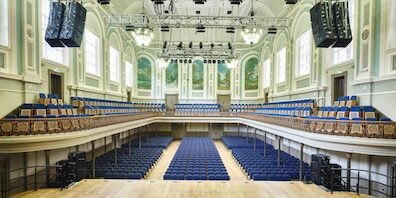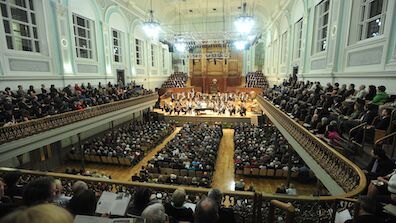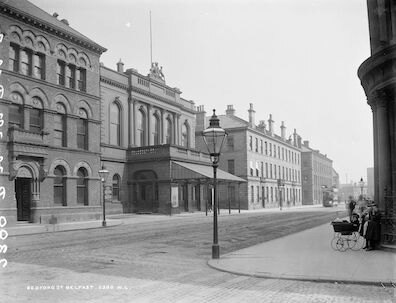Ulster Hall
Ulster Hall
In Brief
Bloom tells M'Coy of his wife's upcoming concert engagement:
"She's going to sing at a swagger affair in the Ulster Hall,
Belfast, on the twenty-fifth." The reference to a large and
elegant concert venue in south-central Belfast gives some
sense of Molly's level of professional success.
Read More
The building was designed by Irish architect William Barre.
Construction began in 1859, and the theater opened for
business in May 1862. The Belfast News Letter called
it "unexcelled, and all but unrivalled, as an edifice for the
production of musical works," and The Northern Whig
proclaimed it "a music hall fit for the production of any
composition, and for the reception of any artist, however
eminent." It was purchased by the city of Belfast in 1902 and
has been used as a public hall ever since. In 1904 it seated
about 2,000 people, though today the seating capacity is less.
The stage can accommodate large orchestras.
As an adjective, "swagger" means something like
"swell" or "posh." The OED gives the definition
"Showily or ostentatiously equipped, etc; smart or fashionable
in style, manner, appearance, or behaviour." The largely
positive adjective has a clear connection with the more
disparaging verb and noun forms of "swagger": "To behave with
an air of superiority"; "external conduct or personal
behaviour marked by an air of superiority or defiant or
insolent disregard of others."


